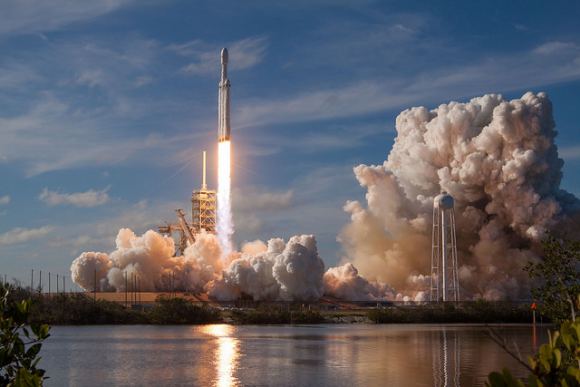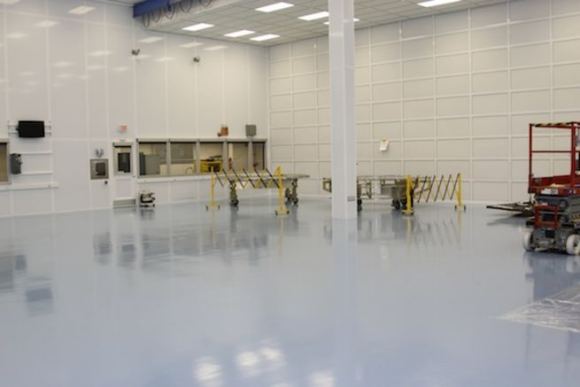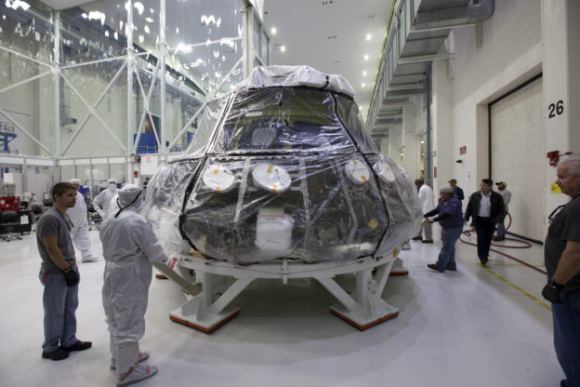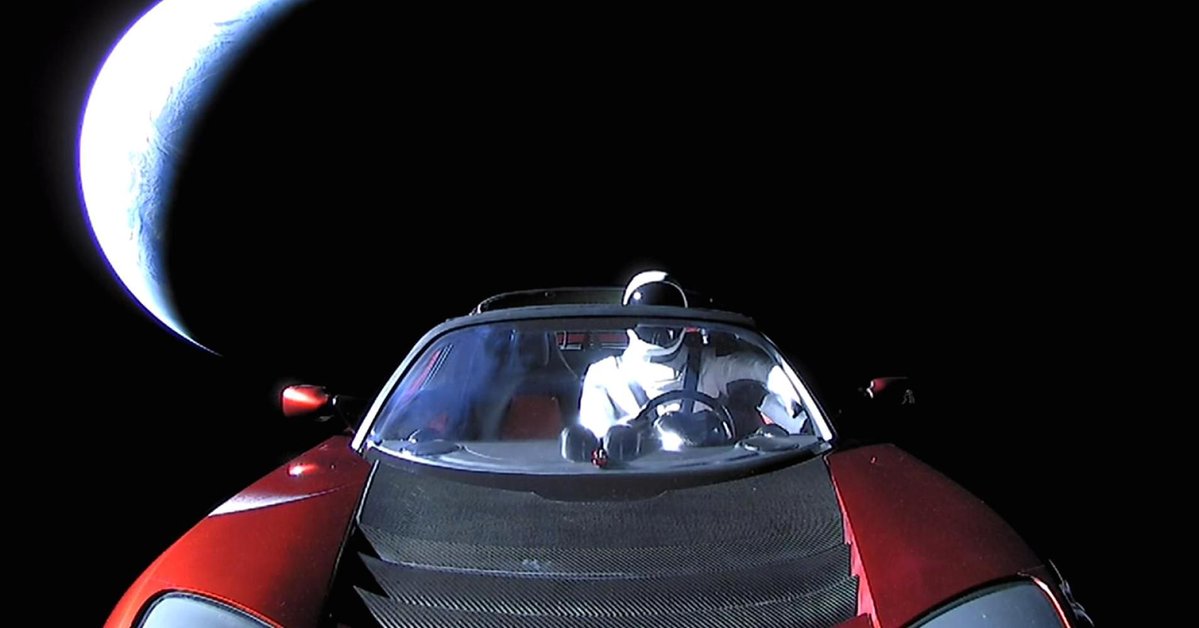A great celebratory eruption accompanied the successful launch of SpaceX’s Falcon Heavy rocket in early February. That launch was a big moment for people who are thoughtful about the long arc of humanity’s future. But the Tesla Roadster that was sent on a long voyage in space aboard that rocket is likely carrying some bacterial hitch-hikers.

A report from Purdue University suggests that, though unlikely, the Roadster may be carrying an unwelcome cargo of Earthly bacteria to any destination it reaches. But we’re talking science here, and science doesn’t necessarily shy away from the unlikely.
“The load of bacteria on the Tesla could be considered a biothreat, or a backup copy of life on Earth.” – Alina Alexeenko, Professor of Aeronautics and Astronautics at Purdue University.
NASA takes spacecraft microbial contamination very seriously. The Office of Planetary Protection monitors and enforces spacecraft sterilization. Spreading Terran bacteria to other worlds is a no-no, for obvious reasons, so spacecraft are routinely sterilized to prevent any bacterial hitch-hikers. NASA uses the term “biological burden” to quantify how rigorously a spacecraft needs to be sterilized. Depending on a spacecraft’s mission and destination, the craft is subjected to increasingly stringent sterilization procedures.
If a craft is not likely to ever contact another body, then sterilization isn’t as strict. If the target is a place like Mars, where the presence of Martian life is undetermined, then the craft is prepared differently. When required, spacecraft and spacecraft components are treated in clean rooms like the one at Goddard Space Flight Center.

The clean rooms are strictly controlled environments, where staff wear protective suits, boots, hoodies, and surgical gloves. The air is filtered and the spacecraft are exposed to various types of sterilization. After sterilization, the spacecraft is handled carefully before launch to ensure it remains sterile. But the Tesla Roadster never visited such a place, since it’s destination is not another body.
The Tesla Roadster in space was certainly manufactured in a clean place, but there’s a big difference between clean and sterile. To use NASA’s terminology, the bacterial load of the Roadster is probably very high. But would those bacteria survive?
The atmosphere in space is most definitely hostile to life. The temperature extremes, the low pressure, and the radiation are all hazardous. But, some bacteria could survive by going dormant, and there are nooks and crannies in the Tesla where life could cling.

The Tesla is not predicted to come into contact with any other body, and certainly not Mars, which is definitely a destination in our Solar System that we want to protect from contamination. In fact, a more likely eventual destination for the Roadster is Earth, albeit millions of years from now. And in that case, according to Alina Alexeenko, a Professor of Aeronautics and Astronautics at Purdue University, any bacteria on the red Roadster is more like a back-up for life on Earth, in case we do something stupid before the car returns. “The load of bacteria on the Tesla could be considered a biothreat, or a backup copy of life on Earth,” she said.
But even if some bacteria survived for a while in some hidden recess somewhere on the Tesla Roadster, could it realistically survive for millions of years in space?
As far as NASA is concerned, length of time in space is one component of sterilization. Some missions are designed with the craft placed in a long-term orbit at the end of its mission, so that the space environment can eventually destroy any lingering bacterial life secreted away somewhere. Surely, if the Roadster does ever collide with Earth, and if it takes millions of years for that to happen, and if it’s not destroyed on re-entry, the car would be sterilized by its long-duration journey?
That seems to be the far more likely outcome. You never know for sure, but the space-faring Roadster is probably not a hazardous bio-threat, nor a back-up for life on Earth; those are pretty fanciful ideas.
Musk’s pretty red car is likely just a harmless, attention-grabbing bauble.


“But we’re talking science here, and science doesn’t necessarily shy away from the unlikely.”
Meanwhile, astronomers will continue to shun and ridicule any idea that extraterrestrials have already visited Earth, despite in the same breath gushing about how many extrasolar planets are out there, and how many are likely to harbor conditions suitable for life.
Sigh…
No one shuns or ridiculed the idea, they just want evidence, not anecdotes.
There’s an enormous amount of evidence for those willing to open their eyes to see it. Not only do we have credible sightings from everyone from US Presidents to astronauts to military to pilots to military, but we also have historical events that have taken place over major cities like Los Angeles and Washington, DC.
We have also seen UFOs pose major national security risks, like shutting down and/or activating nuclear missile silos. Oh, and we also now have thousands of de-classified documents showing that the US, Great Britain, and Russia regard UFOs with the highest interest.
But yeah, just anecdotes 🙂
Show me a dropped bolt, a glove, some alien DNA. Good clear pics and video showing more than lights and fuzzy shapes.
Seeing something you can’t identify doesn’t mean you saw a spaceship, even if you’re a credible observer.
There is no credible evidence that any aliens messed with nuclear silos…do some research somewhere other than Infowars and the “History” Channel. Skeptoid is a good start.
Of course govts are interested, it’s their job to investigate weird stuff in case it’s a threat.
Now is when you call me a disinformation agent, I suppose. Hope the Illuminati send me my check this month. Bye!
Um, there is absolutely credible evidence that UFOs started and stopped nuclear launch sequences at multiple missile silos. We have first hand accounts of personnel stationed at those bases. We also have countless radar traces of unidentified objects invading restricted air space over the capitol and military bases.
A classic shoot-from-the-hip reaction from debunkers is to simply say these accounts “aren’t credible”, because they really haven’t researched the accounts themselves, because they already have their minds made up beforehand.
I doubt you’d make the cut for the Illuminati. I think they aim a little higher.
We need to get over our fear of contaminating other planets. We are going to eventually build colonies on the moon, Mars and the moons of the outer planets. It is impossible to sterilize people. If we come we will bring our biosphere with us. Mars at best has microscopic life. It is no different than the empty lot next door. We put a garden in it we change the biology the is the way of the universe.
Contaminating WHAT?
The Universe has “contaminated” itself for Billions of years; it is commonly called Panspermia 😉 and IF any of Elon’s “personal”
critters survive the TESLA ride, “they” deserve to contaminate whatever place they land on! 😉
I find this whole discussion nuts!
Whatever. As of now, it has been predicted that the car will return back to only earth but not any other planet. So our bacteria will reach back to us someday. We can then study those bacteria, about their living in space.